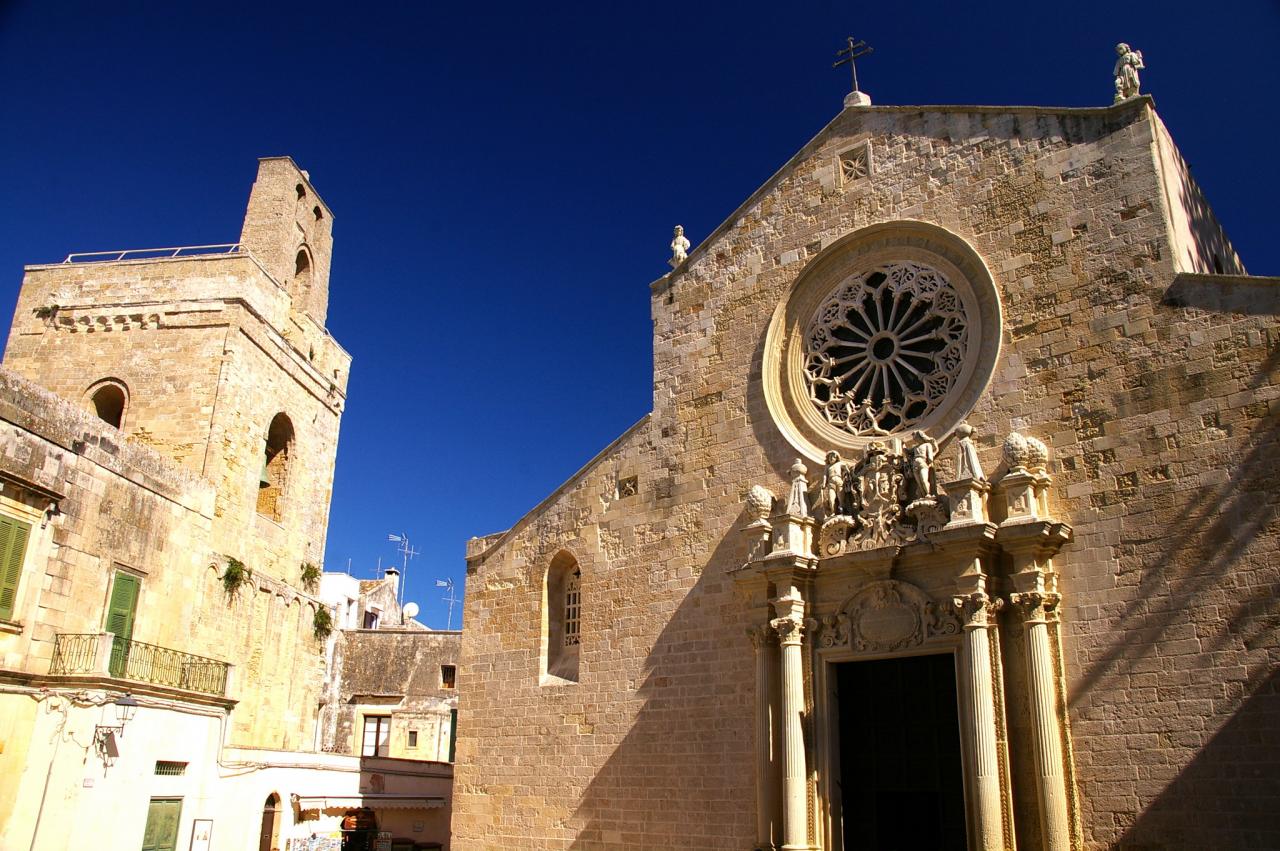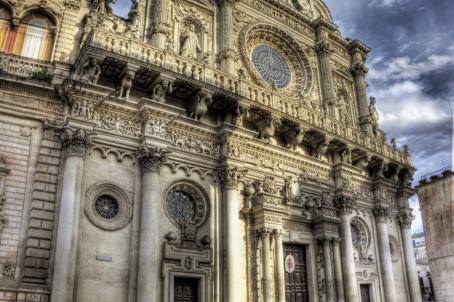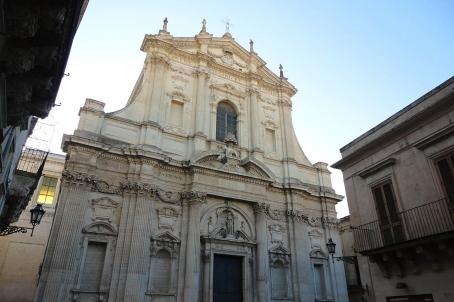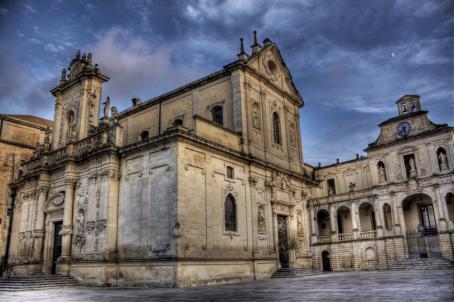Otranto Cathedral
Otranto Cathedral was founded in 1068 on the remains of a Messapian village, a Roman Domus and a temple of the first Christians. It is a synthesis of different architectural styles including Byzantine, early Christian and Romanesque elements. In 1480, the cathedral was damaged and briefly transformed into a mosque by the Turks, leading to its partial reconstruction in 1481, after the liberation of Otranto. In the right nave, in seven large cupboards and in the apse, are preserved the bones of the Holy Martyrs of Otranto. These are the remains of nearly eight hundred people massacred by the Turks for refusing to renounce their Christian faith.






